Recently, I was invited to the White House’s Back-to-School Climate Education Event. Dr. Kathryn Sullivan, head of NOAA (National Oceanic and Atmospheric Administration), encouraged us educators to help our students understand the “dynamics of our planet”. Teaching climate science does just that.
One of my favorite ways to do this (which is also my 5th graders’ favorite lesson) involves having the students use physical models to simulate glacial melting and resulting sea level rise. When my students saw the chain of events from greenhouse gases to sea levels rising they began to realize that Earth’s systems can interact in powerful ways. I’m going to share this lesson with you today.
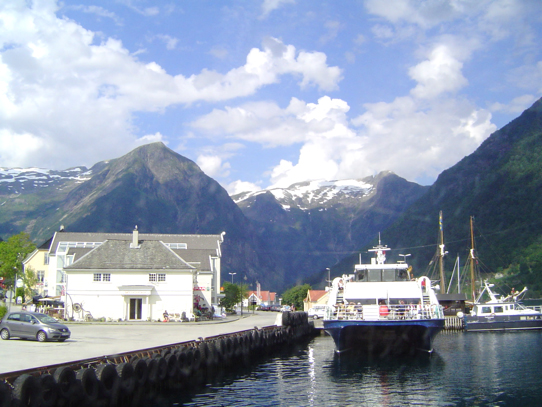
As part of NGSS’s Earth’s Systems Unit, I began the lesson activating background knowledge by teasing out what the students already knew about air pollution—what it is and what causes it. I showed the students a picture of a town in Norway. It looked similar to the physical models they would be using in class that day, with mountains behind a coastal town on the edge of the ocean. I purchased the plastic models for this lesson from NASCO, but they could also be created by students using clay and a plastic salad container.
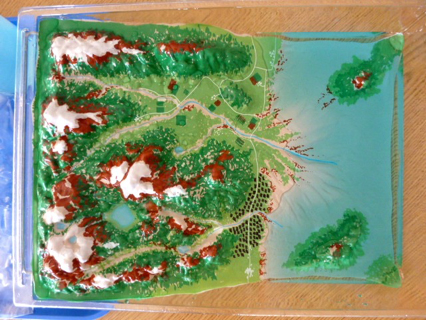
Before class, I set up six of the model coastal towns around the classroom, and filled the “ocean” with real water. During the lesson, four students gathered around each model. They used their imaginations to get “inside this world”. Each child chose a house (black rectangle on the model), and discussed with their group what it was like to live there. This was an important step to activate the children’s imaginations, and encourage them to develop some emotional attachment to “their homes”.
Each group laid a bag of ice (with holes cut in the bottom) across the top of the “mountains” in their model to simulate ice caps and glaciers. We discussed how power plants, factories, and cars put carbon dioxide and other greenhouse gases into the air, and that this air pollution is trapping the sun’s heat close to Earth, causing the planet to get warmer.
I explained that since we had a limited time for our science class, just 40 minutes, we would have to speed up the process in our working model so we could see the effects of a warming Earth in a short amount of time. Computer models do the same. They show hundreds of years of change in just a few seconds.
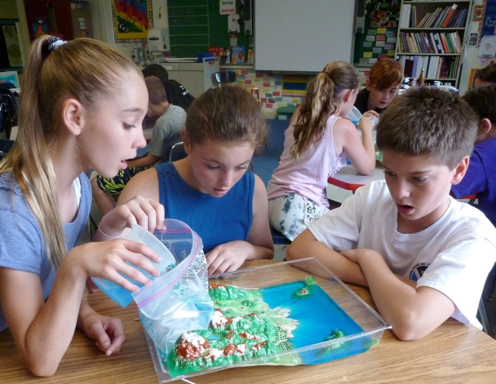
I told them that some of the ice pack in the mountains had already begun melting. The children showed this by slowly pouring a half-cup of water into their bag. This caused additional melting of the ice. The water flowed out of the holes in the bottom of the bag, down the mountains, and into the ocean. The ocean level began to rise. The children quickly realized that their homes were about to be submerged!
Excited voices filled the classroom as the students saw what was happening to their town. On the one hand they were horrified. On the other hand, they knew it wasn’t really happening to them. They laughed as they saw the whole town flooded, and at the same time complained that it shouldn’t be happening. Every student was totally engaged.
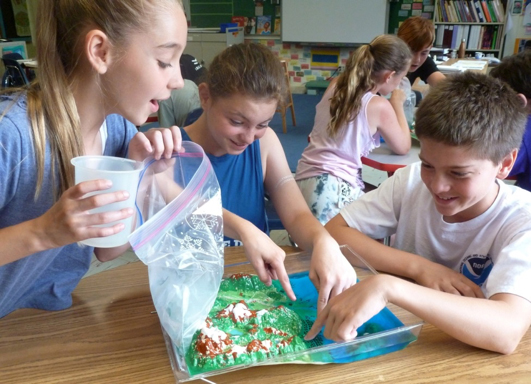
As I circulated around the room, I listened to conversations, and asked groups what had happened within their miniature world and why, noting misconceptions that could be addressed during class discussion. To help students clarify their thinking, I asked them to draw in their science journals a flow chart, a cause-and-effect sequence showing the chain of events, and to identify which Earth systems were being affected each step of the way. Although the simulation happened quickly, the learners witnessed multiple steps in the sequence of events from increased greenhouse gases to the flooding of a town:
1. People pollute air more and more (biosphere affects atmosphere).
2. Increasingly, the sun’s heat is trapped in the atmosphere by the greenhouse gases in the air (atmosphere).
3. Increasing air temperatures melt land ice (atmosphere affects hydrosphere).
4. Melting land ice raises the ocean level (hydrosphere).
5. The ocean floods land and houses (hydrosphere affects geosphere and biosphere).
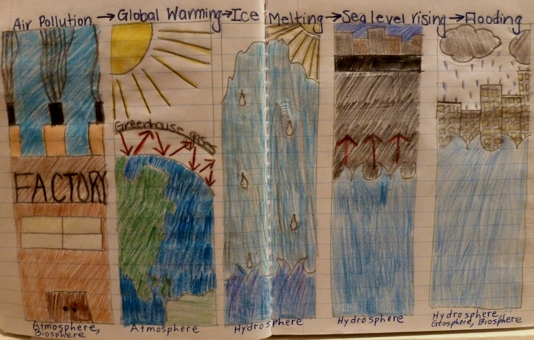
Gathering the children on the rug, I asked them to explain what had happened, working backwards: “Why did the town flood? Why did the sea level rise?” I reminded them that this was a working model of the real world. They also reversed their thinking, examining their flow charts from the beginning to end, filling in gaps in their notebooks. Partners then reviewed the entire sequence again, this time using scientific terminology (biosphere affects atmosphere) and checking each other’s notebooks. I helped the learners apply what they had seen in the model to the real world, showing them pictures of coastal cities around the world (Manhattan, Hong Kong, Cape Town, etc.). I asked them to predict what could happen if this pattern continues. The students understood that lives would be disrupted from flooding, and areas would become uninhabitable, that people would need to move away from the coasts.
The next day, I explained that if we understand what’s causing the ocean to rise we can begin to design solutions. I wrote the children’s ideas for reducing air pollution on a chart. I told them that the good news is that many adults are taking steps to reduce air pollution, but they also need kids’ help. The children researched on the Internet ways kids could reduce air pollution (see Kids Against Climate Change [link broken]), and added ideas to our chart. They talked about taking action at home as well as at school. To disseminate their ideas they created an Animoto video they hope will inspire other children to take action to help Planet Earth. We teachers are in a prime position to make a difference in society by educating children about the scientific reality of climate change, and the resulting sea level rise. We know how to help children understand basic concepts in engaging and age-appropriate ways. And when we do, we help them connect the dots, so even young minds can understand the dynamic feedbacks of our planet that will affect their lives for years to come.
About the author: Kottie Christie-Blick is a NOAA Climate Stewards Educator and a Distinguished Fulbright Teacher. Kottie Christie-Blick, along with colleagues Jacob Tanenbaum and Samantha Levine, will be presenting a hands-on workshop, “Climate Science: How Can Such a Serious Topic Be So Much Fun?!” at the 2016 NSTA Conference in Nashville. She teaches 5th grade, is an educational consultant, and has spoken at NSTA and other conferences across the United States, as well as in several other countries.
See Kids Against Climate Change [link broken] for a student-inspired website where kids can talk to each other about climate change issues and ideas. It also provides an authentic audience to encourage students to pay attention during science class. You can see the full lesson: Sea Level Rise Lesson Plan for Teachers and read a blog for elementary school children at the site. Students are welcome to add their comments. Note that all comments are moderated, but will appear on the site within 24 hours.
